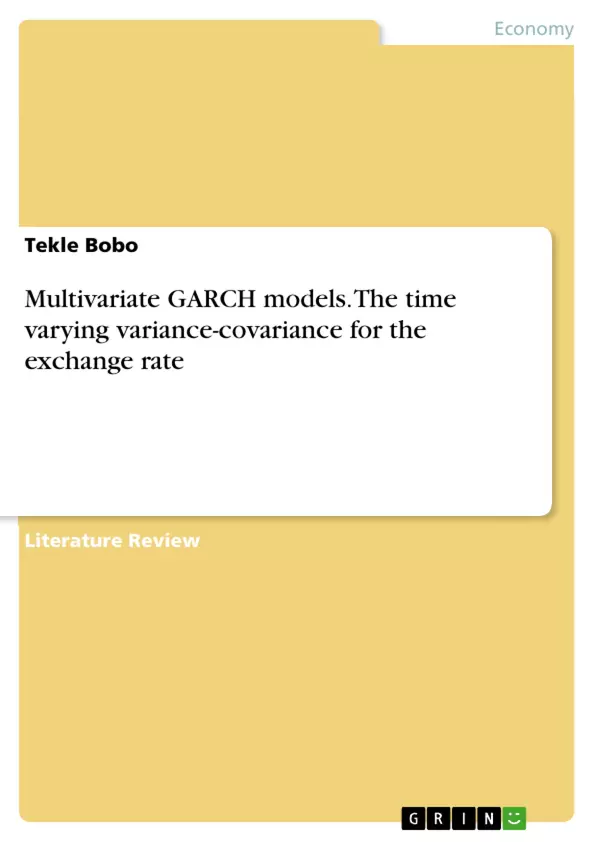This paper is a review to the GARCH family’s models. Since the seminal paper of Engle from 1982, much advancement has been made in understanding GARCH models and their multivariate extensions. In MGARCH models parsimonious models should be used to overcome the difficulty of estimating the VEC model ensuring MGARCH modeling is to provide a realistic and parsimonious specification of the variance matrix ensuring its positivity.
BEKK models are flexible but require too many parameters for multiple time series of more than four elements. BEKK models are much more parsimonious but very restrictive for the cross-dynamics. They are not suitable if volatility transmission is the object of interest, but they usually do a good job in representing the dynamics of variances and covariance. DCC models allow for different persistence between variances and correlations, but impose common persistence in the latter (although this may be relaxed) Student’s t distribution assumption is more proper under negative skewness and high kurtosis of return series.
Understanding and predicting the temporal dependence in the second-order moments of asset returns is important for many issues in financial econometrics. It is now widely accepted that financial volatilities move together over time across assets and markets. Recognizing this feature through a multivariate modeling framework leads to more relevant empirical models than working with separate univariate models. From a financial point of view, it opens the door to better decision tools in various areas, such as asset pricing, portfolio selection, option pricing, and hedging and risk management. Indeed, unlike at the beginning of the 1990s, several institutions have now developed the necessary skills to use the econometric theory in a financial perspective.
Inhaltsverzeichnis (Table of Contents)
- Introduction
- Objective
- Literature Review
- Summary and Conclusions
- Reference
Zielsetzung und Themenschwerpunkte (Objectives and Key Themes)
This review aims to provide a comprehensive understanding of various GARCH family models, particularly focusing on their flexibility and parsimony. The review will delve into both theoretical aspects of financial time series analysis and empirical applications in the context of exchange rate volatility. It will explore a specific research article analyzing exchange rate volatility based on the theoretical and empirical evidence of GARCH models.
- Understanding the dynamics of financial volatility and co-volatility across markets.
- Exploring the use of multivariate GARCH (MGARCH) models to study the interrelationship between asset volatilities.
- Examining the implications of time-varying variance and covariance for financial decision-making, including asset pricing, portfolio selection, and risk management.
- Investigating the application of MGARCH models in analyzing exchange rate fluctuations and their impact on inflation and international trade.
- Evaluating the effectiveness of MGARCH models in capturing the volatility characteristics of exchange rate markets and understanding the interdependencies between currencies.
Zusammenfassung der Kapitel (Chapter Summaries)
- Introduction: This chapter introduces the concept of time-varying variance-covariance in asset returns and its significance for financial econometrics. It highlights the importance of multivariate modeling frameworks for capturing the interconnectedness of financial volatilities and the advancements made in GARCH modeling since its inception.
- Objective: This chapter outlines the objectives of the review, including a comprehensive understanding of GARCH family models, a review of exchange rate volatility under these models, and an examination of a specific research article that analyzes exchange rate volatility based on the theoretical and empirical evidence of GARCH models.
Schlüsselwörter (Keywords)
This review focuses on multivariate GARCH (MGARCH) models, time-varying variance-covariance, exchange rate volatility, asset pricing, portfolio selection, hedging, risk management, inflation, international trade, BEKK, DCC, and CCC.
- Quote paper
- Tekle Bobo (Author), 2020, Multivariate GARCH models. The time varying variance-covariance for the exchange rate, Munich, GRIN Verlag, https://www.grin.com/document/950200



